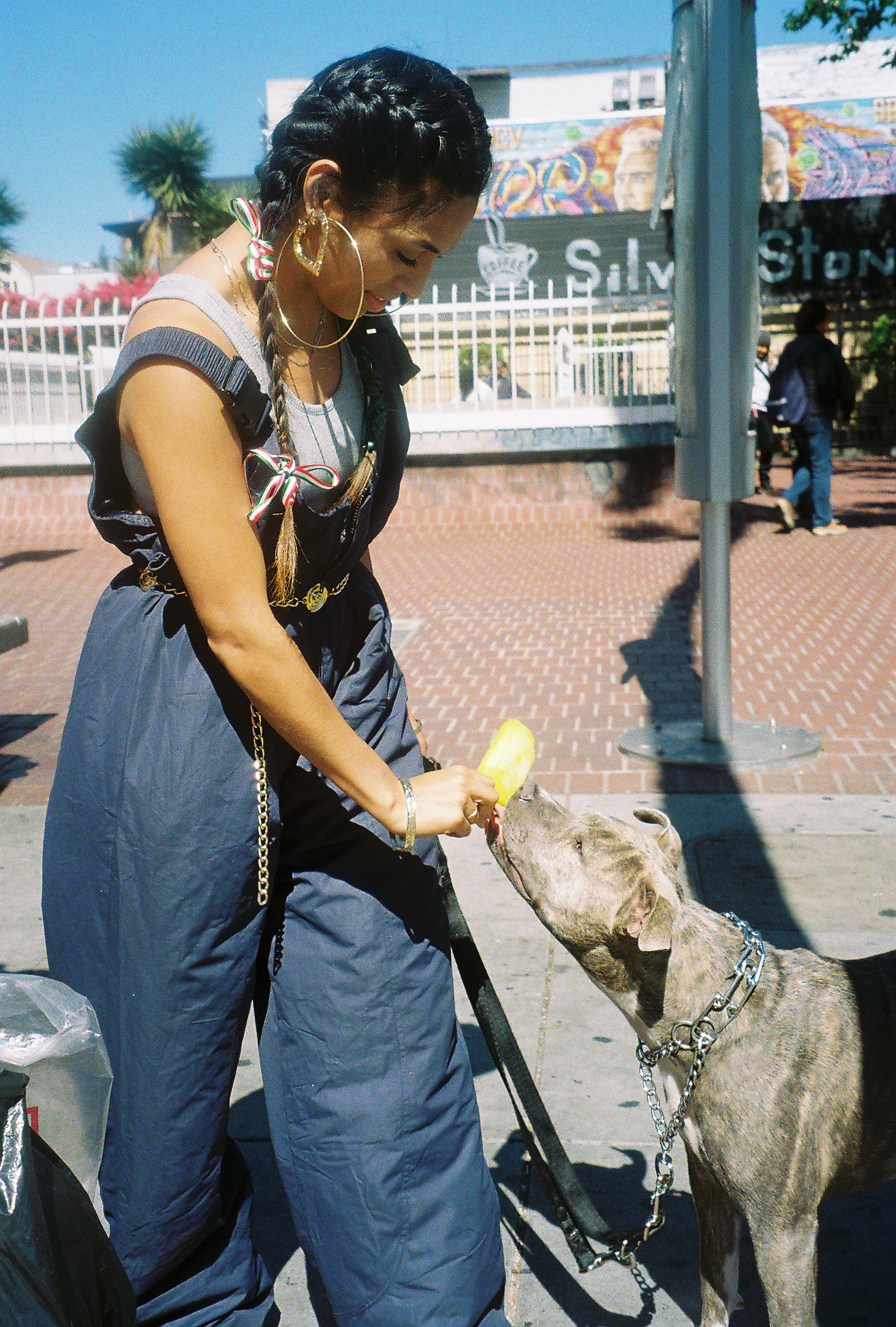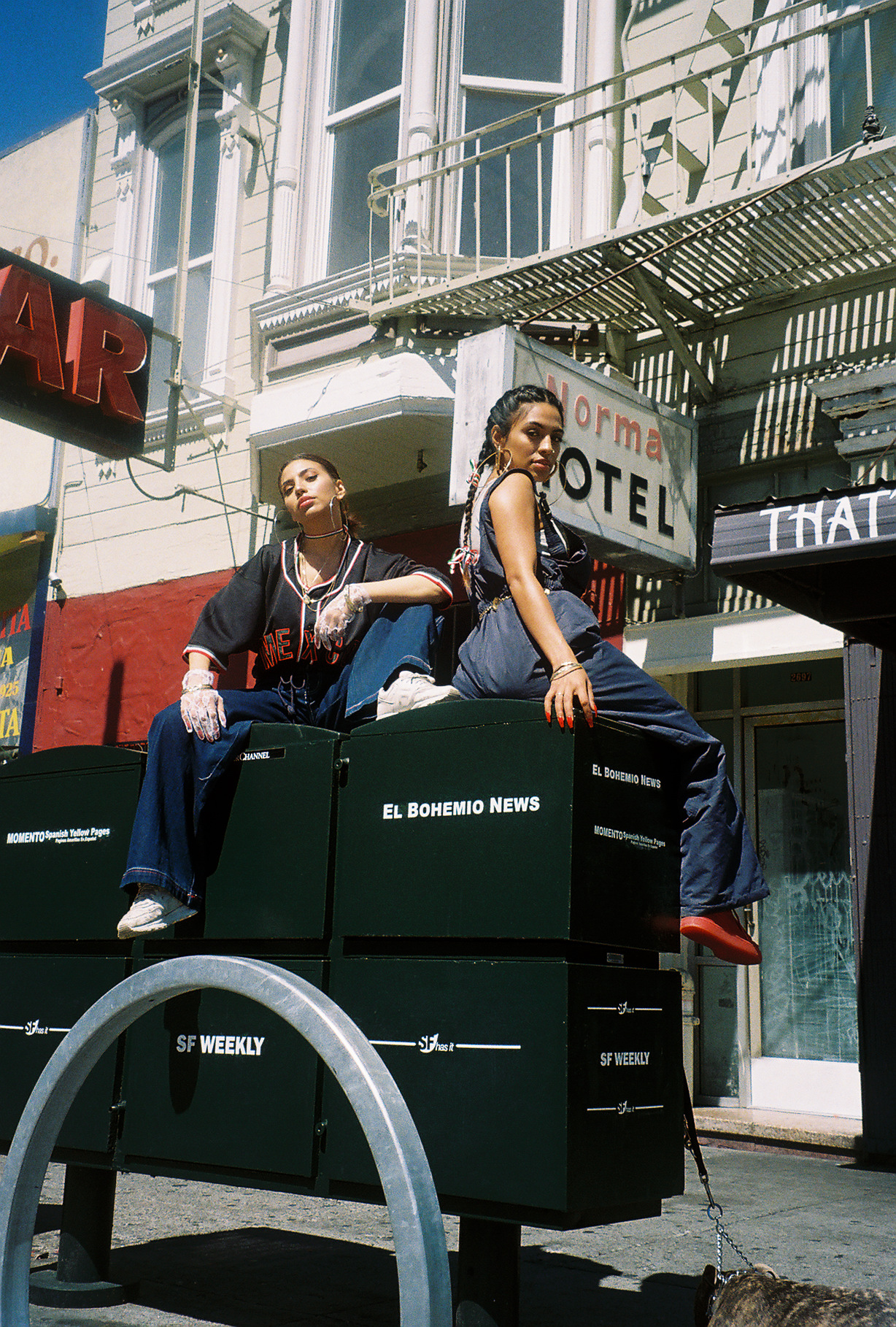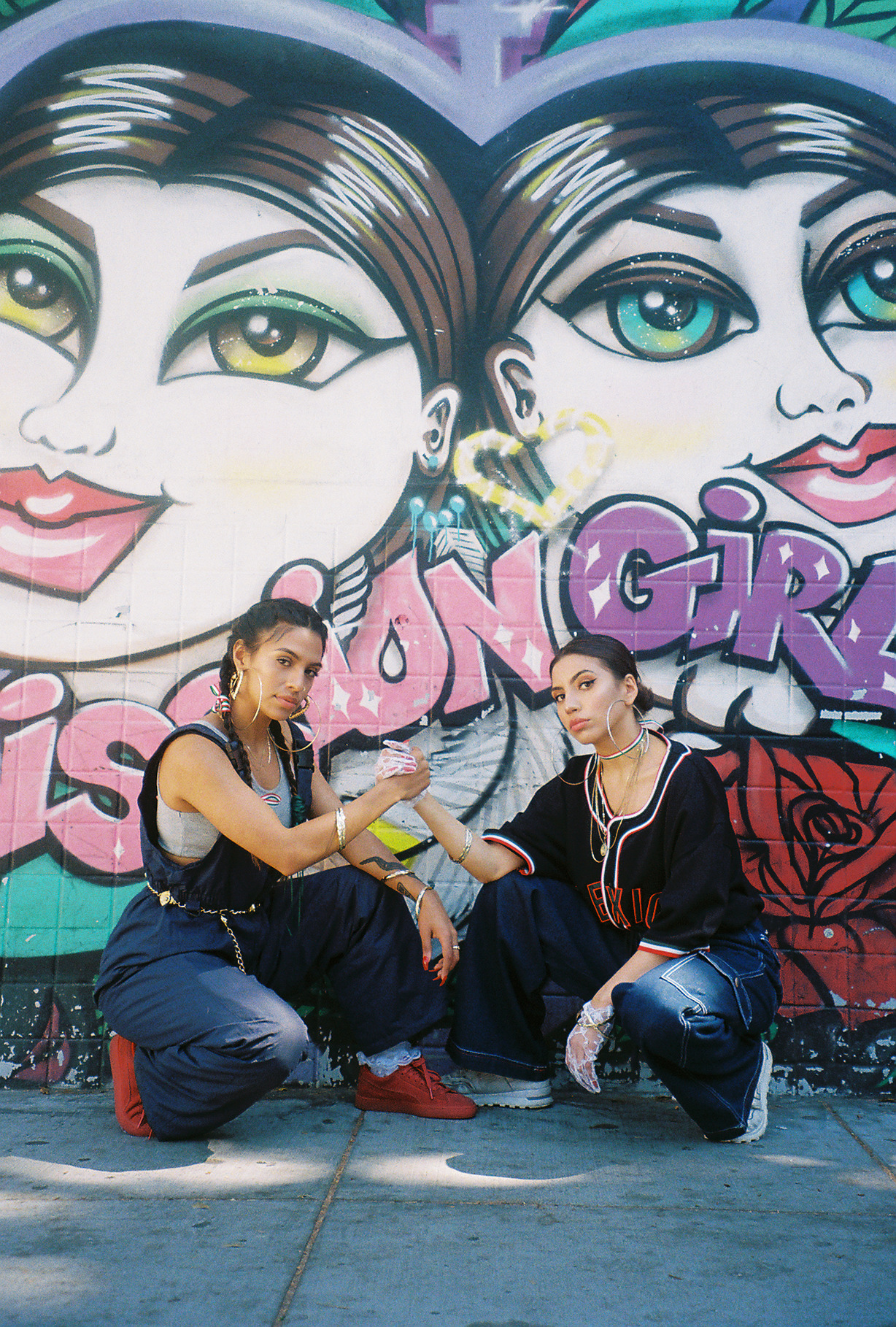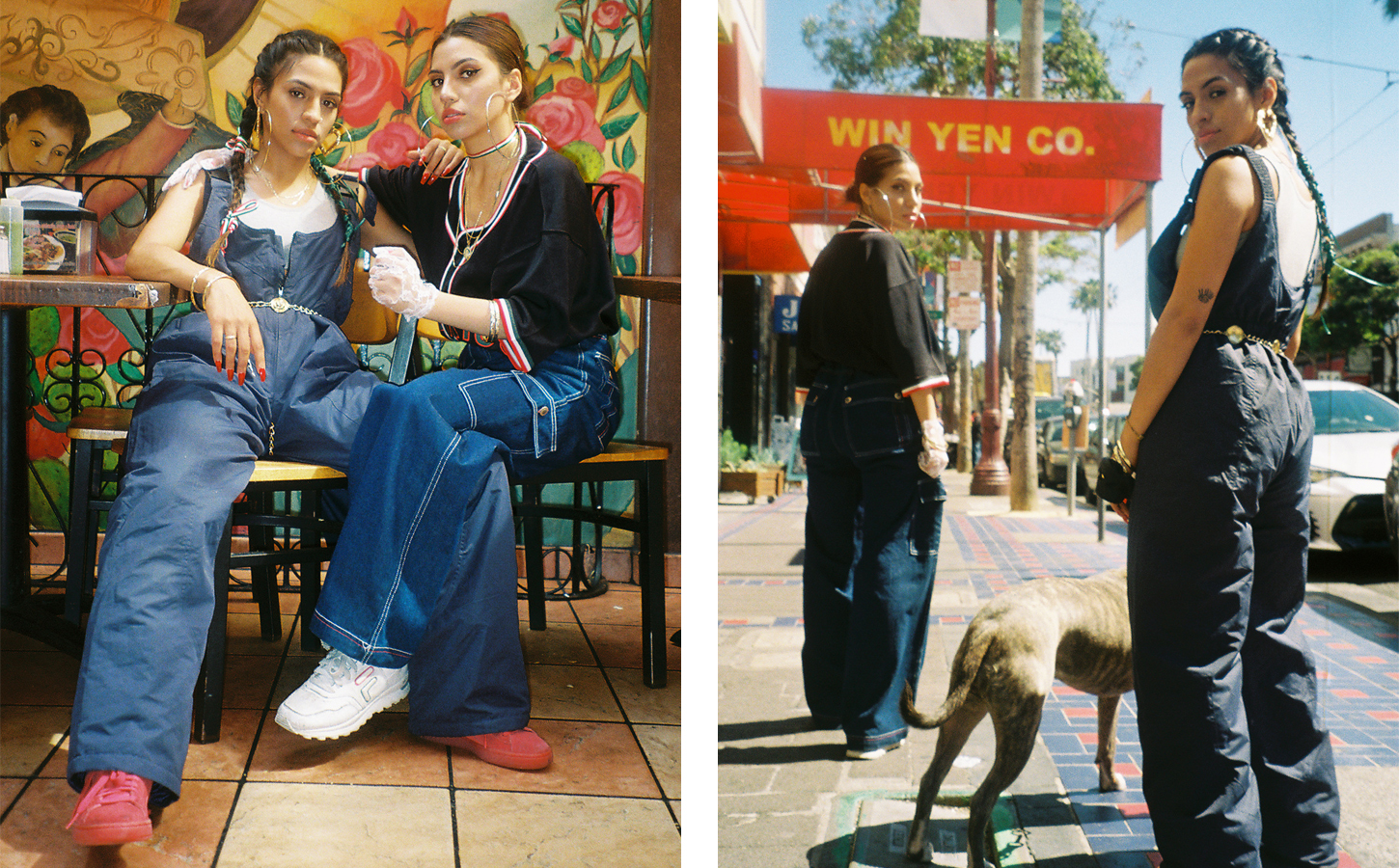In 2017, Thalia Gochez, the daughter of Salvadorian and Mexican immigrants, started taking portraits of women of colour living in San Francisco as a way to highlight their lack of representation in the media. In these images, the photographer and fashion student sought to underline the ways in which fashion trends were being stolen from marginalised communities. The result was a collection of film photographs that showed women of colour honouring and reclaiming their heritage through style.
Out of this body of work Thalia decided to illuminate the story of two siblings, Xhiyo and Naomi, who were born and raised in the Mission District, an area that has seen massive change due to gentrification. The intimate series, titled Hermanxs de Sangre, gives the subjects an opportunity to honour their neighbourhood and heritage — each backdrop has a sentimental meaning, while the photos are imbued with traditional elements of Mexican culture and style. The result is an impactful photo series intended to represent Latinx people, to help them feel a sense of security and empowerment.
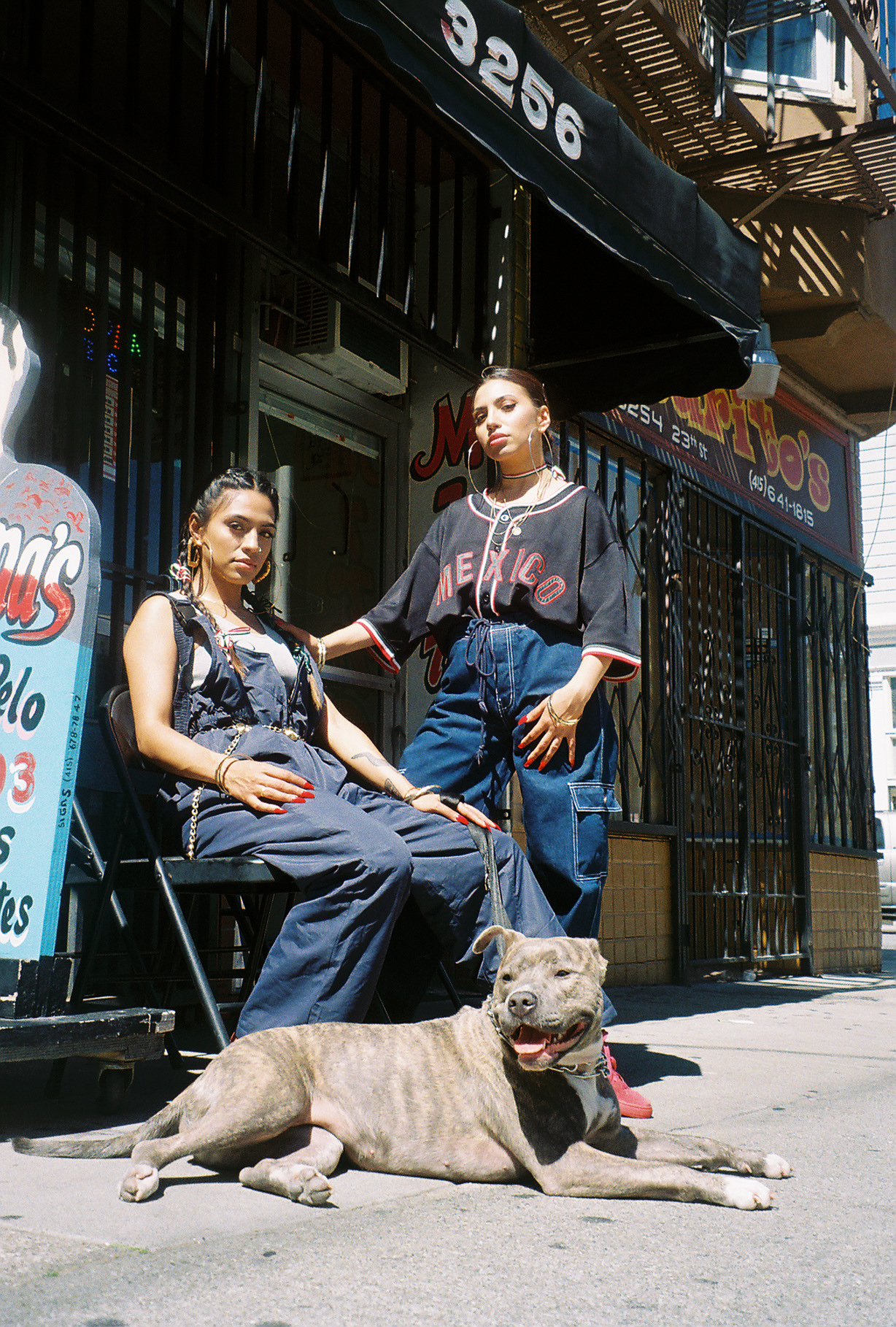
Last month, an exhibition of the body of work was on display at SOMArts, a cultural centre in San Francisco, with 100% of the proceeds benefiting Mission Girls, a local nonprofit that provides community support to low-income families.
i-D spoke to Thalia about the ways in which her work celebrates Latinx siblinghood amidst a political climate in which people of colour must constantly endure rejection, appropriation and the loss of their private and public spaces.
What inspired you to develop the Hermanxs de Sangre series?
Xhiyó and Naomi! They’re siblings born and raised in the Mission district of San Francisco. A predominantly Latinx neighborhood that is rapidly disappearing due to gentrification. I wanted to highlight their experience. When we discuss gentrification we often hear about the cost of living skyrocketing, family-owned businesses going out of business, mysterious apartment building fires or an increase of police patrolling, but how does gentrification affect the actual individual? If we do hear about the individual on larger platforms, it’s often negative and their character is questioned. It’s time for people of colour to build their own platforms to authentically showcase their experience. We are the change we’ve been waiting for. Hermanxs de Sangre is Xhiyó and Naomi’s experience through my own Latinx lens.
What larger themes do you aim to highlight by sharing the story of Xhiyó and Naomi?
Hermanxs de Sangre was intended to reclaim space and provide a sense of empowerment, healing, authenticity through the subjects’ sacred bond. With today’s political climate, it’s crucial I continue to highlight various POC experiences — we are constantly led to believe our experiences and voices are not valid. What viewers are observing isn’t a photoshoot — it’s community healing through storytelling, it’s resistance, it’s strength and power.
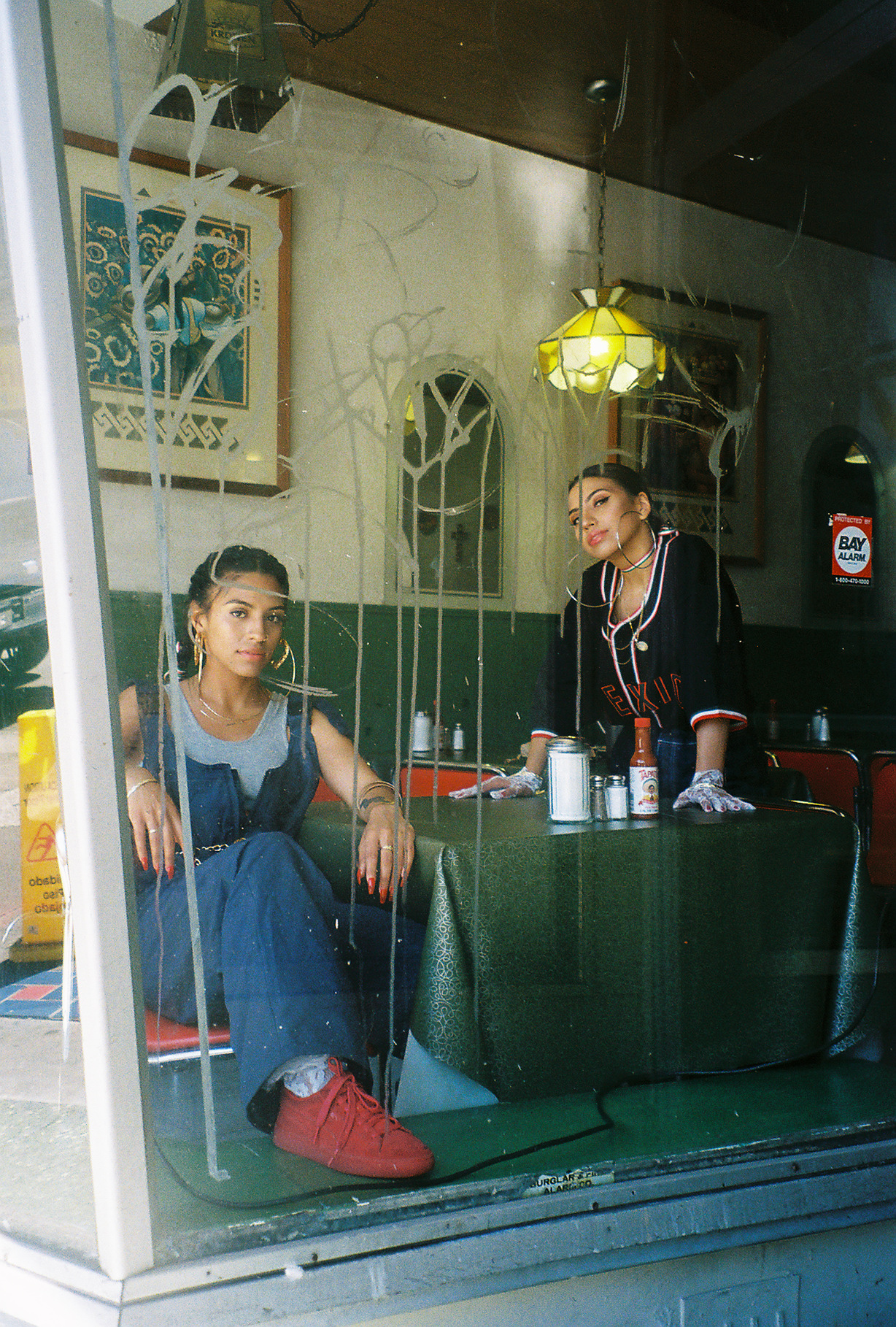
How have gentrification and cultural appropriation impacted your community and your creative work?
I am learning the power of slowing down and producing more intentional work. When I slow down, important questions float to the surface. As a Bay Area transplant, person of colour and artist, it’s crucial I check the intention and impact my art will have on communities that I am not born and raised in. This is something I hope to inspire other creatives to do — not perpetuate issues but help find solutions. As for cultural appropriation, what we are seeing in fashion right now is the trickle-up effect from the streets and communities that are just being authentic to their own cultures. This isn’t anything new. It’s important we recognise the originators of those fashion trends and credit them. POC are the most creative individuals in the world so it makes sense that they have “desired aesthetics” — reclaiming certain clothing, hairstyles, even food, is a common thread that links all of my work.
In what ways did you imbue these photographs with visual cues that underline the siblings heritage and personal narrative?
Since Xhiyó and Naomi, like me, are part Mexican, incorporating subtle cultural-specific details comes naturally and doesn’t take much creative energy — whether it’s Naomi wearing braids with Mexican flag-coloured ribbons tied in, or Xhiyó wearing a Mexican jersey. I take pride in where I come from and it’s not something I typically need a Pinterest board to explore. However, highlighting Naomi and Xhiyó’s personal narrative was a matter of me listening to them. Prior to shooting I asked Xhiyó and Naomi to write down a list of spaces in their neighbourhood that feel safe and sacred. Every street shot was a space that has sentimental meaning to the subjects. Whether it was Casa Lucas Mercado, a grocery store where they would run around in as kids while their grandma shopped, or the Mission Girls building, which held an after school program that was extremely influential to them as youth. Each shot was intentional.

Who are these photos meant to be seen by? What do you hope viewers will take away from seeing these photographs?
This is created 100% by brown folx for brown folx. I hope viewers take away a sense of safety, inspiration and power. I hope it makes brown folx feel seen and beautiful. I hope it helps non-POC viewers look beyond their lens and into another’s experience and build empathy. I hope it inspires other creatives to be more intentional and sensitive with each project. It’s important I actively strive to decolonise this form of art, especially the power dynamic between subject and photographer. It should be a fair exchange. There is so much privilege in hearing another’s experience and to be given trust with such intimate narratives. I am grateful.
How did you feel when you found out the photographs would be exhibited at SOMArts?
Honoured and deeply moved. It was life affirming to be given such an amazing opportunity, however the true magic is in Xhiyó and Naomi and their narrative I had the privilege of exploring with them.
Why was giving the proceeds from these photos to Mission Girls important to you?
Since this is a series that strongly supports community healing, having access to such an intimate narrative I decided that 100% of the proceeds will go to Mission Girls, a nonprofit program that provides various tools to help young girls. Mission Girls is a program that both Xhiyó and Naomi went to as kids. It’s crucial we put money back into the right hands to sustain a community that is rapidly disappearing. Integrity and mindfulness is something I hope to inspire others to live by.
Donate to Mission Girls here.

